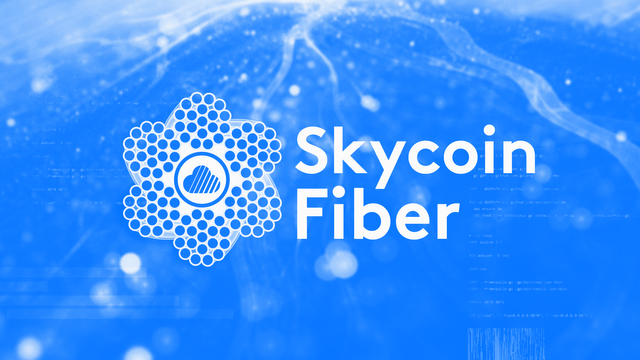How blockchain was supposed to be done - Skyfiber, the infinitely scalable, parallel peer-chain.

At the height of ICO mania last year, how many stopped for a moment amid the FOMO chaos to ponder the implications of the Ethereum network grinding to a standstill every time an ICO is launched? Seriously..... here we had the platform which was billed as the future of blockchain showing itself to be incapable of handling token sales and, let's be brutally honest about it, it wasn't like Ethereum was overloaded with DAPS running thousands of transactions competing with the ICO's for resources at the time. It was mainly just some ERC20 kickstarting it's scam and Ethereum couldn't keep up.
Scalability remains a major obstacle to mainstream adoption of Distributed ledger technologies and one which will have to be overcome if we ever hope to see the large scale use of cryptocurrency which will require hundreds of thousands of cost effective micro transactions per second. Just imagine trying to buy a $2 cup of coffee with Bitcoin and having to wait an hour for confirmation while being ripped with a transaction fee larger than the value of your purchase! Not goina fly. At all.
Essentially, blockchain scalability issues fall in two broad categories;
- Time required to include a transaction in a block
- Time required to reach consensus
In Bitcoin and Ethereum, overhead is added due to the inherent flaws in their respective designs. As the popularity of the platforms increase, the time required to include a transaction in a block increases and users now have to compete for miners attention and in the world of mining, this translates to the highest bidder winning.
Time required to reach consensus increases with every node added to the network because the blockchain has to be replicated across the entire network and as a platform becomes more popular, more nodes are added. It is a catch 22 situation which sees consensus time increasing as popularity of the currency increases.

Skycoin's consensus algorithm, Obelisk, overcomes both obstacles to scalability mentioned above as it uses a web of trust model mathematically derived from opinion dynamics to ensure scalable and computationally inexpensive consensus on the network but that is only the start. Enter Fiber, The infinitely-scalable and highly customizable parallel peer-chain platform.
I realise that is quite a mouthful so let's break it down to bite size chunks.
Platform: Skycoin Fiber is a platform which allows companies and projects to easily deploy their own cryptocurrency Bockchain
Parallel peer-chain: This is the true genius part of Fiber. The Parallel peer-chain architecture is superior to any existing blockchain in terms of reliability. It is best thought of as an infinitely scalable network of blockchains rolled out side by side and functioning in parallel. Whereas every single ERC20 token issued on Ethereum is running on one blockchain which renders it centralised, tokens issued on Fiber will each run on it's own autonomous strand. If one thread goes down, the rest of the Fiber remains viable.
Infinitely Scalable: There is no limit to global Transactions Per Second due to Fiber's stranding technology which allows lateral as well as vertical scaling and there is no theoretical limit to the amount of strands that can be deployed. This translates to infinite scalability.

Skycoin Fiber is completely open source and backed by a large development team and active community. Every strand comes complete with a suite of supporting tools and services which includes; integrations with various exchanges, the Teller OTC (Over The Counter)token sale application, it's own wallet, and a blockchain explorer.
In addition to being integrated with every exchange which lists Skycoin, the design of Skycoin Fiber allows for atomic swaps between strands by default and a marketplace for Skyfiber strands called buysky.org is almost complete.
As if all of this wasn't enough, there are several projects related to Fiber in the pipeline and in various stages of development. These include; A multicoin wallet which is nearing completion, mobile wallets currently in Beta, a decentralised exchange for all Fiber coins, a coinjoin server for anonymity, a coinhourbank where coinhours can be stored, and automated Fiber strand creation where new coins can be created with the push of a button.